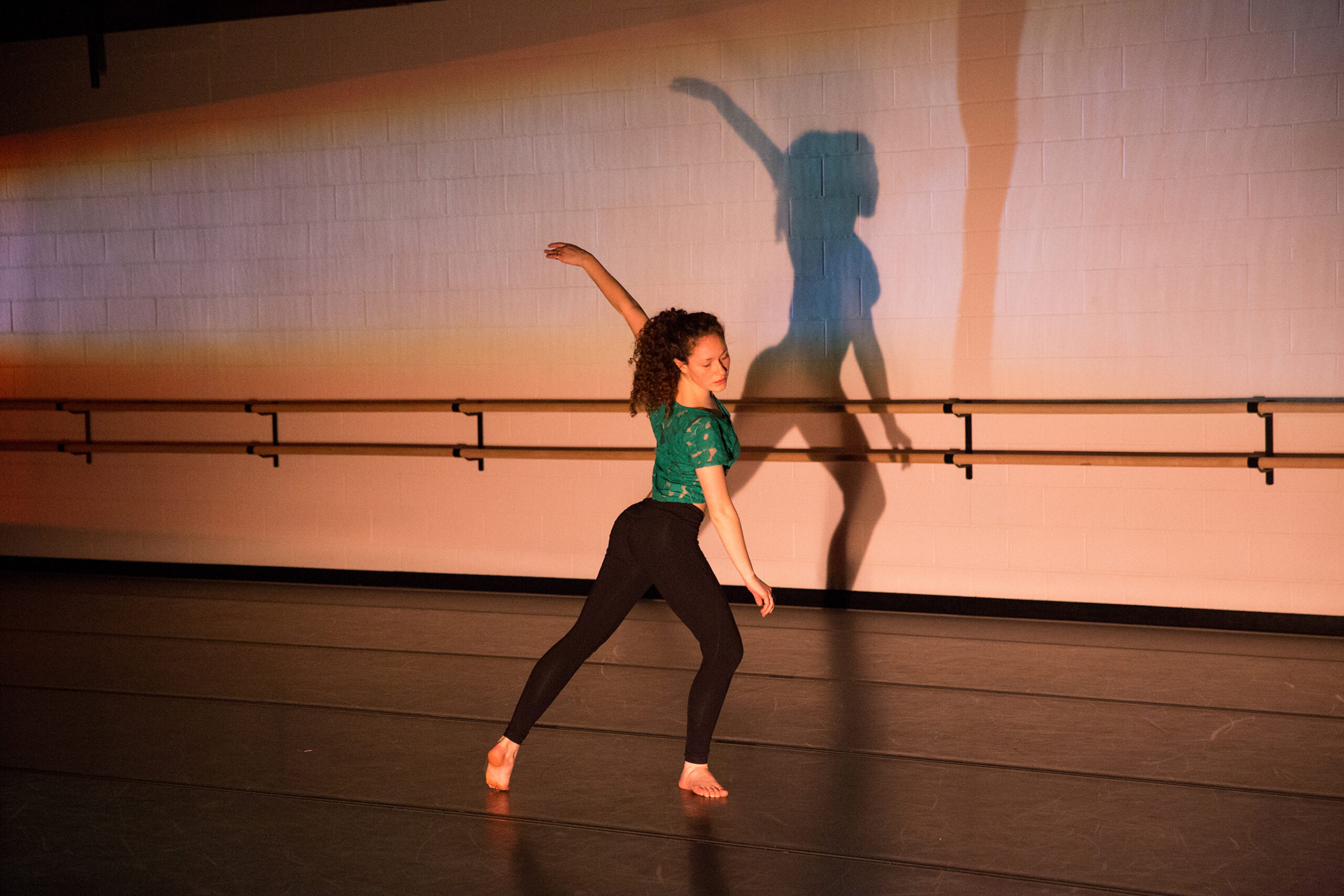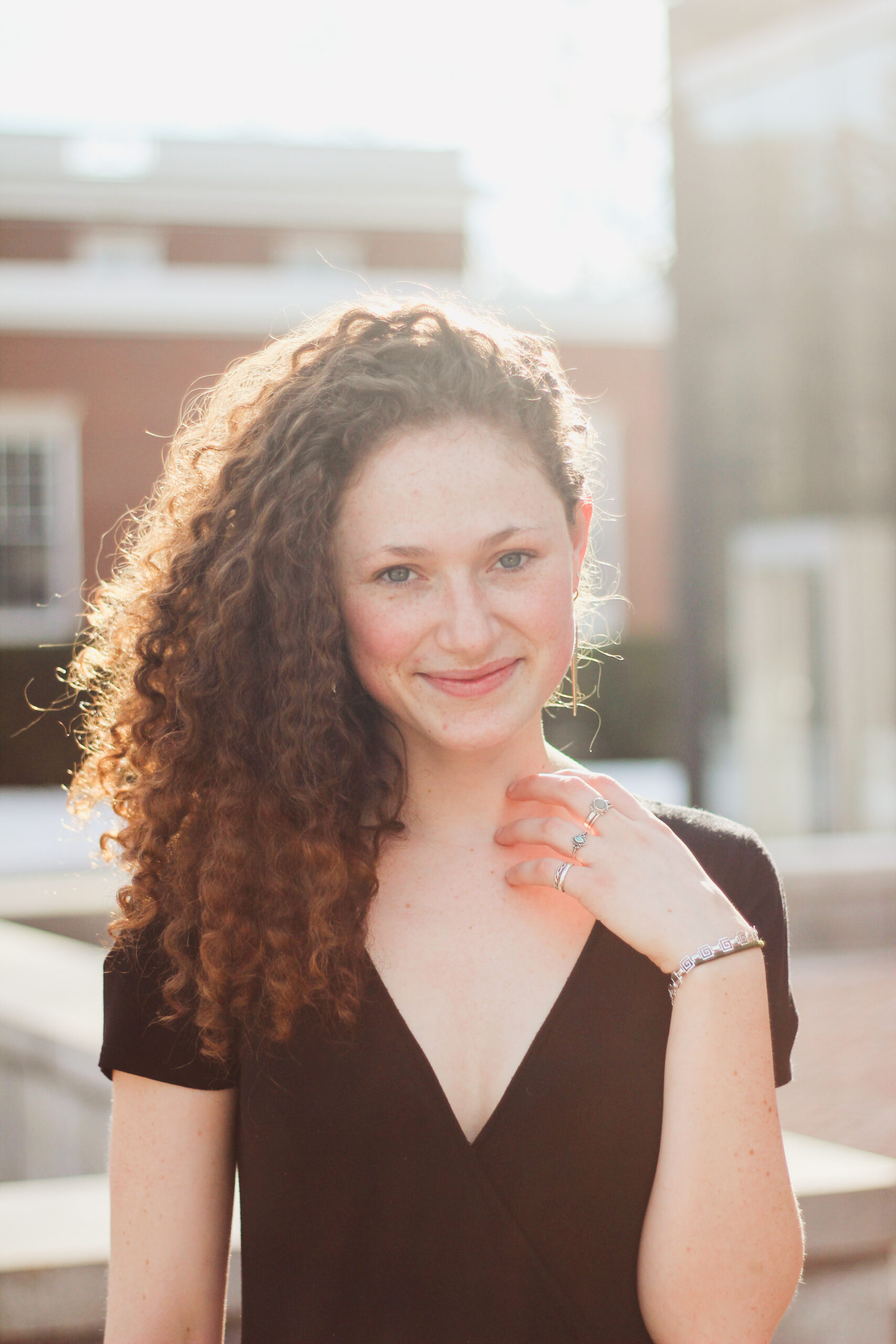Gagliardone ’20 on discipline, drama and developing voice
February 23, 2018
 Ann Basu
Ann BasuThis interview has been edited for length and clarity.
Q: When did you first start dancing? At Bowdoin or before?
A: There is a really small, lovely dance company called Flock Dance Troupe [in Vermont]. It was really close to where I lived, and my dad and I started dancing in it together when I was three. I danced with that company for 14 years of my life, starting at age three.
The artistic director Carol Langstaff created performance pieces. It was very theatrical, and they were sort of these large dance works that had to do with themes of social justice. It was a very authentic way to start dancing because all the movements were very interpretive and improvisational and loosely based on Martha Graham technique—modern dance.
Q: What styles of dance do you do?
A: Flock was improvisational and modern dancing. It was a lot about creating structures with our bodies and using large groups of bodies to symbolize things in real life, like flocks of birds—that’s where the name came from. Carol Langstaff was really interested in the way that flocks of birds moved. And so a lot of what she did was based on the way that natural patterns happen. She transposed that to the bodies of the dance troupe.
Q: Why did you choose to major in dance? What do you like about learning dance at Bowdoin, and in this kind of environment?
A: When I got to Bowdoin, I didn’t really think that I was going to do a lot of dance at all. I definitely didn’t think I was going to major in it. In my freshmen year, there were only modern dance classes offered, and so I took one as my fifth class, just sort of as an extracurricular. I realized that I really have a lot of passion for the art form, and being in a collegiate setting helped me realize that I am interested in studying it and immersing myself in it and learning from scholars about it—in like a more encompassing way than I was in high school.
In modern dance, it’s more focused on tapping into what your body is already capable of and really stretching that and challenging that, but also honoring what your body can already do as a unique body versus as a body trying to achieve a standard that’s set by other people.
If I had to choose a favorite—I really love modern, contemporary dance. I love moving quickly. I’m a very dramatic person, especially when I dance. I love big movements and jumps and running.
I feel like being at Bowdoin, there’s this sort of freedom. I’ve learned a lot of skills in letting go of the judgments and expectations that are written into the high-school ballet world, which is very strict and controlled. But I’m also really grateful for that because I developed a lot discipline and a lot of technical skills.
The training I’ve gotten here has allowed me to explore dance more as an artist. I feel like I’m developing my own voice within the movements that I’m creating.
Q: What else are you studying, and how does dance complement that?
A: I’m also majoring in sociology. I’ve thought a lot about this. For the basic answer: no, because I’ve just found that I have two different passions. The reason why I’m studying sociology is that I’m really fascinated by the way human structures work and I really want to do gender balance and women’s advocacy work as a career. I’m studying sociology as a way to explore gender dynamics and racial dynamics and all the identities humans have.
I found that [dance and sociology] actually do sort of overlap in a more philosophical sense in that I think there’s so much power in the human body and learning how to use the human body. It’s been a really empowering thing for me, going through a few pretty challenging things while I’ve been here. Dance and movement in general have allowed me to remain strong within my body. I’m a very visceral person on an individual level, so it’s been a very empowering experience to tap into what my body is capable of, and then taking that idea and looking at it from a societal perspective. I think that dance can be a really important tool for creating change and for helping trauma recovery and just understanding humans from a different lens. We’ve become so disconnected as a society, and there’s no way you cannot be connected when you’re dancing or when you are watching dance. It’s a very ancient art form, and that ties into why I’m a dancer in the first place.
Q: What kind of challenges do you face in dancing?
A: Well, one challenge is it definitely requires a different head space to be in a creative context than it does to be an academic student.
So, it really does require me to shift my focus in other ways. But that’s also a really positive thing. I think it’s good to have a change.
I definitely have been challenged by the different choreographers at Bowdoin to also explore the very quiet movement and very settled movement and movement that doesn’t necessarily tap into my full technical abilities but is still challenging me as an artist. It’s really awesome; I feel like I’m learning a lot.
Q: How often (and how long) do you practice dancing now at Bowdoin?
A: This semester I’m dancing ten hours a week. Usually, it’s just six hours, like a normal class. I also run Bowdoin Modern Dance Collective. I often go to the studio by myself. It depends, really.
Q: What is the Bowdoin Modern Dance Collective?
A: It’s sort of different from the traditional dance clubs on campus because it’s mostly a space for people to come and move together. We don’t really perform.
Anyone can come whenever they want—there’s no commitment and we rotate who’s teaching. It’s only an hour, once a week. A lot of it is improvisation. There are some combinations that we do, but it’s very collaborative and it’s very much a healing space rather than a performance group.
Q: How does it allow you to express yourself?
A: I feel strong emotions as a person, and moving my body has been way to channel those [emotions] into a physical form that compliments other ways of healing. I think it really allows me to escape my head and be present in my body in a very healthy and empowering way.
It has definitely made me very aware of who I am and how I feel things. My mind-body connection has become really strong because of dancing. I think particularly in college, I have a renewed sense of love for the [dance] form.
Q: What have you learned through taking dance classes at Bowdoin?
A: I definitely learned how to improvise a lot more; that’s a really strong aspect of the program they have here. I’ve learned how to do a lot of floor work, and I learned how to move my body.
I’ve learned that there’s an infinite number of ways that you can move your body, and that is something I continue to practice in class, like coming up with new ways [to move] and keeping my mind open rather than sticking with similar things.
Q: What are some of your goals for dancing?
A: I want to make more choreography, and I want to continue to develop my voice as an artist. [I also want to] continue to develop unique style, and I want to perform more. I think performance is a really important part of my relationship to dance. I get a special form of exhilaration and feel so alive when I’m performing.
Q: Do you hope to continue dancing after Bowdoin?
A: I don’t know in what capacity, but I think that it is very important to my mental health and my sense of being to continue dancing.
Q: What advice would you give to someone who is considering dance as a major?
A: I think to really respect it as a discipline. Ultimately, it’s important to do what you love and to be fulfilled and happy.


Comments
Before submitting a comment, please review our comment policy. Some key points from the policy: